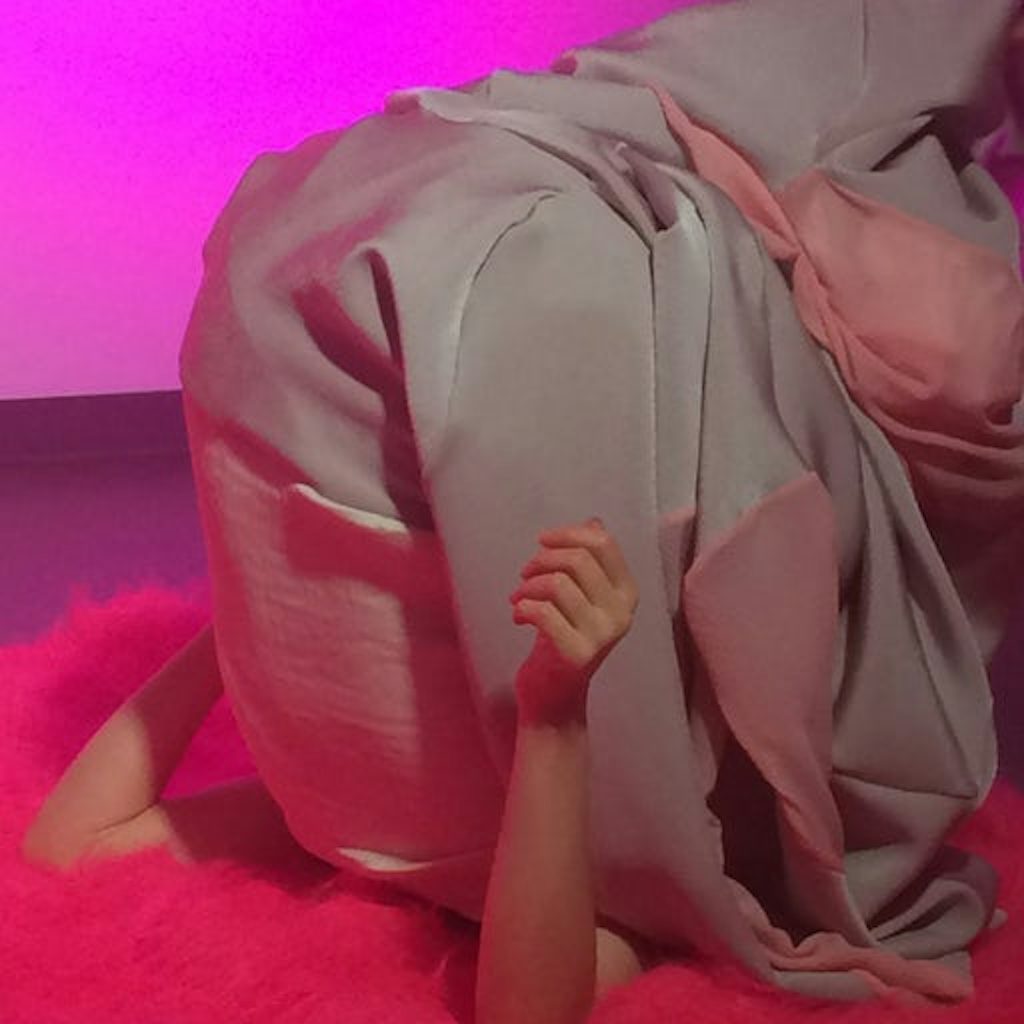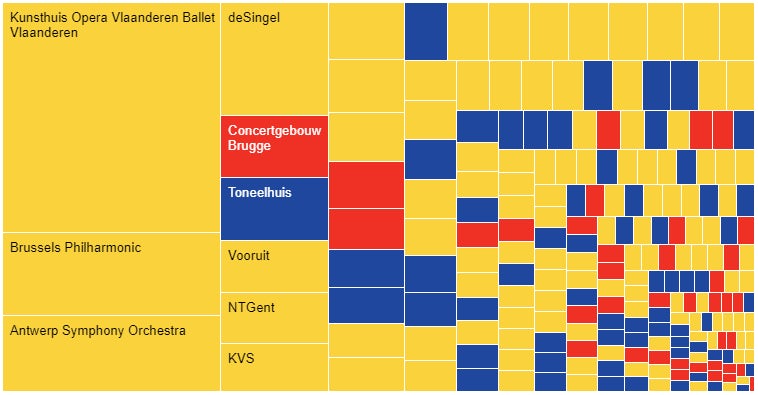
Cherchez les femmes: directors of arts organisations

What about the gender balance at the top of the Flemish arts sector? To answer this question, we did the following counting exercise for the seven Arts Institutions of the Flemish Community and 207 arts organisations with operating grants from the Arts Decree (2017-2021).
Based on the websites of the 214 organisations – supplemented by additional research where necessary – we first determined who is on the boards, what their job title is and whether they are men or women. We then determined the gender profile of each organisation. When the title explicitly attributed the final responsibility to one person (‘managing director’ or equivalent), the gender of this person determined the gender profile of the organisation. When on the website the final responsibility is not explicitly attributed to one board member (e.g. an artistic and a business director), we assume shared final responsibility and the organisation’s profile is determined by the gender of the different board members.
Note: the data of this research was pulled from websites in summer 2017.

About the numbers
The 214 arts organisations together have 274 men and 149 women on their boards – roughly ⅔ men and ⅓ women. When we take into account the nature of their positions, it is noticeable that about ¾ of general leadership is held by men and ¼ by women. The same proportion is found in artistic leadership. Business leadership, in turn, is predominantly female: 55% of business leaders in arts organisations are women, 45% men.
When we determine the gender profile of the board by organisation, we count a total of 38 (18%) organisations with only women at the head (one or more), 61 (28%) with a mixed board and 115 (54%) with only men at the head (one or more).
Higher subsidies, fewer women
If we then order the organisations according to the amount of subsidies they received from the Flemish Community for their operations in 2017, a clear pattern stands out: the higher the subsidies, the fewer women at the top.
Among organisations with grants under 100 000 euros (31 organisations), 29% are led by women only and 26% by a mixed leadership. In the group of organisations with grants from 300 000 to 499 999 euros (47 organisations), 9% have one or more women at the top. 26% of those players are led by a mixed team. In the two highest categories, the proportion of organisations led by women only is 14% (2 of 14 organisations) and 10% (1 of 10 organisations). In the same groups, 21% (3 of 14) and 10% (1 of 10) respectively are led by mixed teams.
Formulated from the perspective of exclusively male leadership: among organisations with a subsidy amount of less than 300 000 euros, a good 40% have exclusively male leadership, in the group between 300 000 euros and two million euros the figure is around 65%. In the group of organisations receiving two million or more, 80% of the organisations are led by exclusively men.
The Arts Institutions of the Flemish Community are among the most heavily subsidised institutions in the field and they are held up as role models. Six of the seven have male directors in 2017: Kunsthuis Vlaanderen Opera Vlaanderen Ballet Vlaanderen, Antwerp Symphony Orchestra, Brussels Philharmonic, deSingel, Vooruit (VIERNULVIER) and AB. Only one of the institutions has a woman in charge: Concertgebouw Brugge.
About the count
This count was carried out based on data on organisations’ websites, not on an insight into the goings-on on the floor at each of these players. As stated, we assigned ‘shared leadership’ only to individuals who were also explicitly named that way by the organisations themselves. It is possible that several organisations that we assign ‘shared leadership’ in this exercise do in practice have one person who assumes ultimate responsibility. In the arts sector, in such a case, it is more likely to be the artistic leadership that determines the final direction than the business leadership. Knowing that artistic leadership is more often in the hands of men and business in the hands of women, we can say that with our picture we have made a rather conservative estimate of the proportion of organisations in the arts that are led exclusively by men.
More information
Link to the charts.







